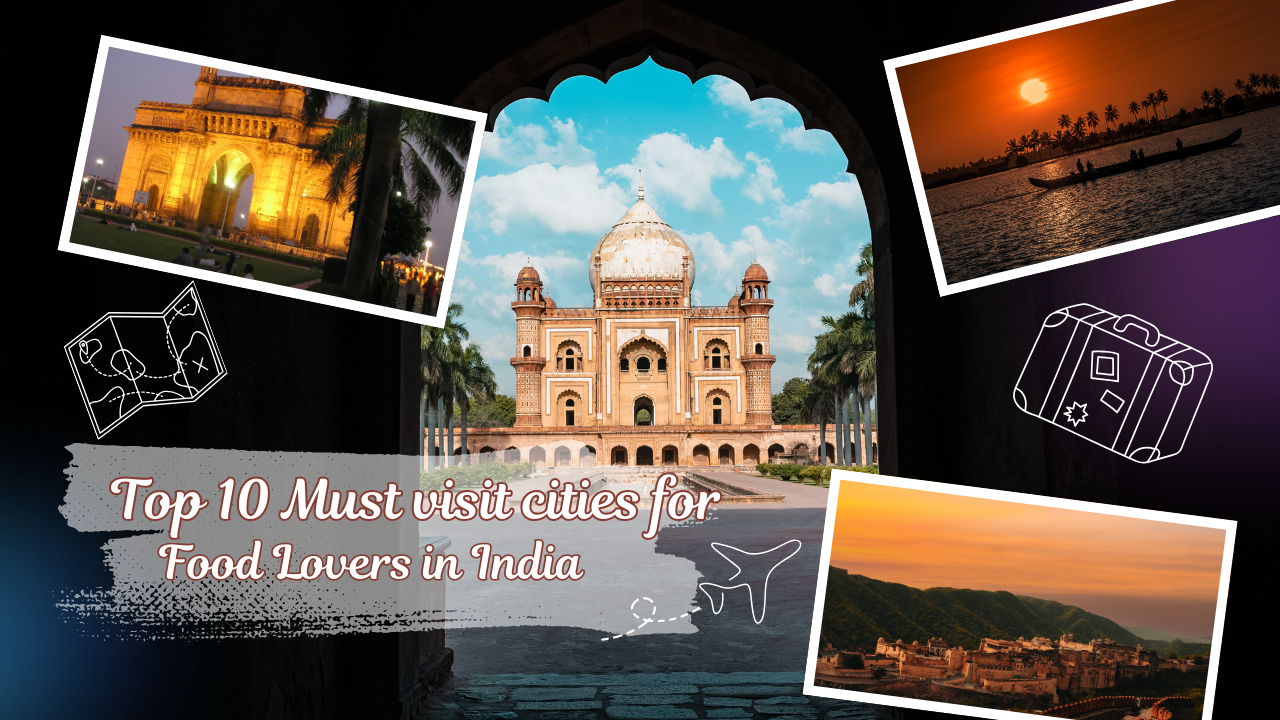The Prayagraj Mahakumbh 2025 Mela, a colossal congregation of faith and humanity, is an experience unlike any other. This once-in-twelve-years spectacle draws millions of pilgrims from across the globe to the confluence of the Ganga, Yamuna, and mythical Saraswati rivers.
While the primary focus remains spiritual, the Mahakumbh 2025 offers a rich tapestry of experiences beyond the religious. Here are the top 10 things to do at the Prayagraj Mahakumbh 2025 Mela:
Here is the list of Things TO Do In Prayagraj Mahakumbh 2025 Mela:
10. Embrace the Human Experience
- Significance: The Kumbh Mela is a testament to the power of faith and the human spirit.
- Experience: Observe the diverse crowd, interact with people from different walks of life, and witness the spirit of unity and compassion that pervades the Mela.
Embracing the Human Experience:
To truly embrace the human experience at the Prayagraj Mahakumbh 2025 Mela, it’s essential to:
- Observe with an Open Mind: Observe the diverse crowd, their rituals, and their interactions with humility and respect.
- Engage with Others: Strike up conversations with fellow pilgrims, learn about their journeys, and share your own experiences.
- Volunteer Your Time: Contribute to the Mela by volunteering your time and services to those in need.
- Embrace the Chaos: The Mela can be chaotic and overwhelming at times. Embrace the chaos as part of the experience and learn to navigate the crowds with patience and understanding.
- Reflect and Introspect: Use the Mela as an opportunity for introspection and self-reflection. Consider your place in the world and your connection to the larger human community.
The Prayagraj Mahakumbh 2025 Mela is more than just a religious gathering; it’s a profound human experience that transcends the boundaries of faith and culture. By embracing the diversity, celebrating the spirit of humanity, and engaging with the unique energy of the Mela, you can gain a deeper understanding of yourself and your place in the world.
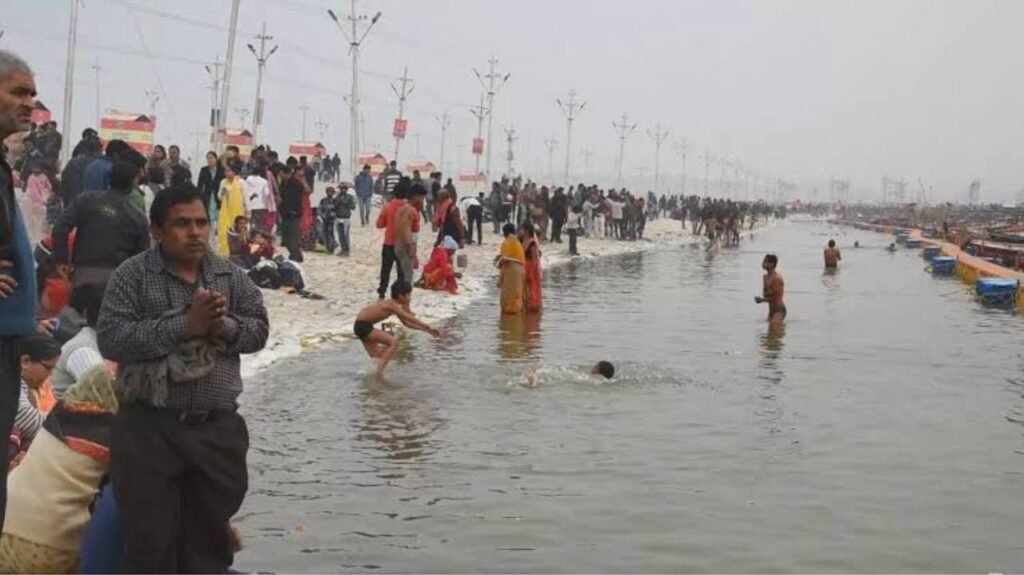
9. Explore Local Markets
- Significance: The Mela is a shopper’s paradise, offering a wide range of souvenirs, handicrafts, and religious artifacts.
- Experience: Browse through the bustling markets, bargaining for unique souvenirs and experiencing the local entrepreneurial spirit.
Tips for Shopping at the Kumbh Mela:
- Bargaining is Key: Bargaining is an essential part of the shopping experience at the Kumbh Mela. Don’t hesitate to negotiate prices with the vendors.
- Carry Cash: While some vendors may accept digital payments, it’s always advisable to carry cash for smaller purchases.
- Be Mindful of Quality: Inspect items carefully before making a purchase, especially for delicate handicrafts and electronics.
- Support Local Artisans: Look for stalls run by local artisans and support their livelihoods.
- Enjoy the Experience: Embrace the vibrant atmosphere of the Kumbh Mela markets and enjoy the process of discovering unique treasures.
Beyond the Marketplaces:
- Akharas: Many Akharas have stalls where you can purchase items made by the sadhus themselves, such as handmade crafts and herbal remedies.
- NGO Stalls: Many NGOs set up stalls at the Kumbh Mela to raise awareness and funds for their causes. Consider supporting their efforts by making a purchase or donation.
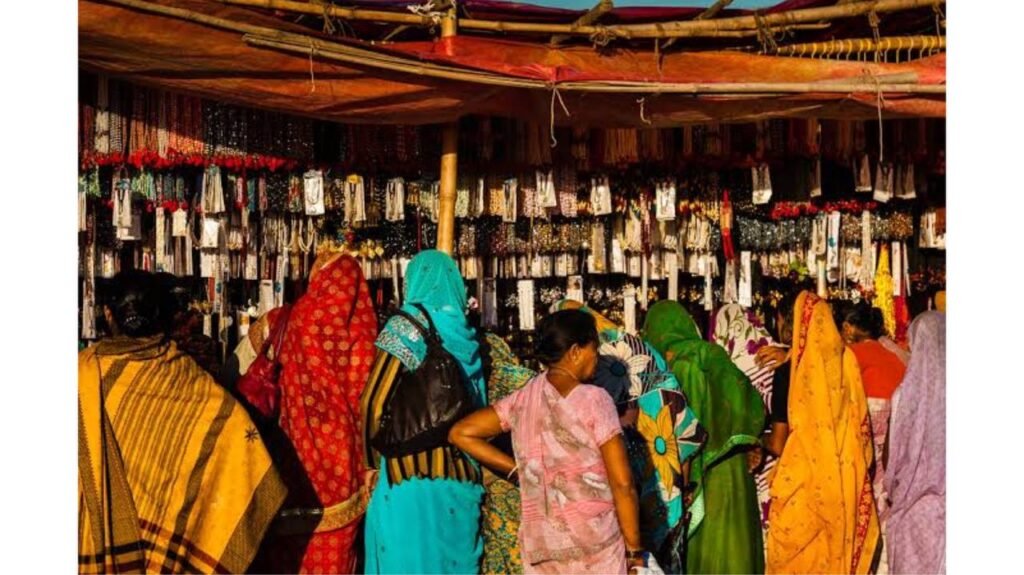
8. Experience the Spiritual Significance
- Significance: The Kumbh Mela is a deeply spiritual experience.
- Experience: Participate in meditation sessions, attend discourses by spiritual leaders, and engage in acts of charity and service. The Mela provides a unique opportunity for introspection and spiritual growth.
Here are some ways to experience the spiritual significance of the Mahakumbh 2025:
- The Holy Dip (Shahi Snan): For many, the most significant act is the ceremonial bath in the Triveni Sangam. Believed to cleanse sins and liberate the soul, the dip is a deeply moving experience. The collective energy of millions chanting prayers and seeking purification creates an atmosphere of intense devotion.
- Witnessing the Aarti at Triveni Sangam: The evening Aarti is a mesmerizing spectacle. The rhythmic chants of hymns, the flickering flames of thousands of lamps, and the serene glow reflecting on the river create a truly divine atmosphere. Participating in the Aarti can be a deeply moving experience, connecting you to the collective spiritual energy of the gathering.
- Exploring the Akharas: The Akharas, or monastic orders, are a vital part of the Kumbh Mela. Visiting their camps, observing their daily routines, and interacting with the sadhus and saints can offer valuable insights into different spiritual paths and philosophies. Many Akharas organize discourses, meditation sessions, and cultural performances, providing opportunities for spiritual growth and enlightenment.
- Engaging in Spiritual Practices: The mahakumbh 2025 Mela provides a unique environment for spiritual practices. Participate in meditation sessions, attend discourses by renowned spiritual leaders, and engage in acts of charity and service. The atmosphere of devotion and the collective energy can enhance your spiritual experience.
- Introspection and Self-Reflection: The mahakumbh 2025 can be a powerful catalyst for introspection and self-reflection. The sheer scale of the event, the presence of millions of devotees seeking spiritual liberation, and the serene atmosphere can create a conducive environment for inner peace and contemplation.
- Connecting with the Divine: For many, the mahakumbh 2025 is an opportunity to connect with the divine on a deeper level. The collective energy, the chants, the prayers, and the spiritual practices all contribute to a heightened sense of awareness and a deeper connection with the divine.
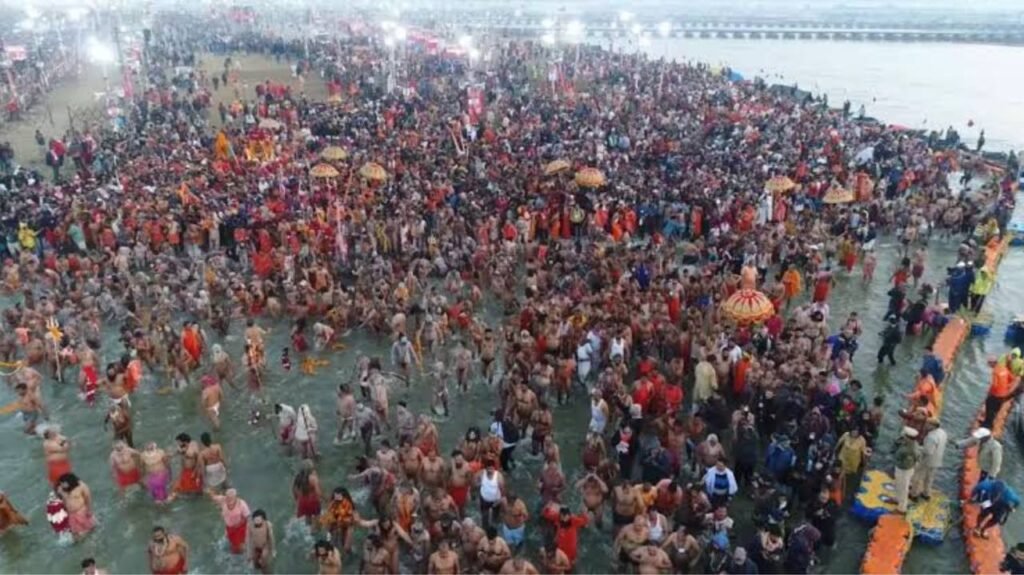
7. Attend Cultural Programs
- Significance: The mahakumbh 2025 hosts a variety of cultural programs, including music, dance, and theater performances.
- Experience: Enjoy the vibrant performances showcasing India’s rich cultural heritage. Many Akharas also organize cultural events, offering a glimpse into their unique traditions.
A Memorable Experience:
Attending cultural programs at the mahakumbh 2025 is more than just entertainment. It’s an enriching experience that allows you to:
- Connect with your cultural roots: Immerse yourself in the rich traditions and heritage of India.
- Expand your horizons: Discover new art forms and appreciate the diversity of Indian culture.
- Gain a deeper understanding of spirituality: Experience how art and culture are intertwined with spirituality.
- Create lasting memories: Capture the vibrant colors, sounds, and energy of the performances in your mind and heart.
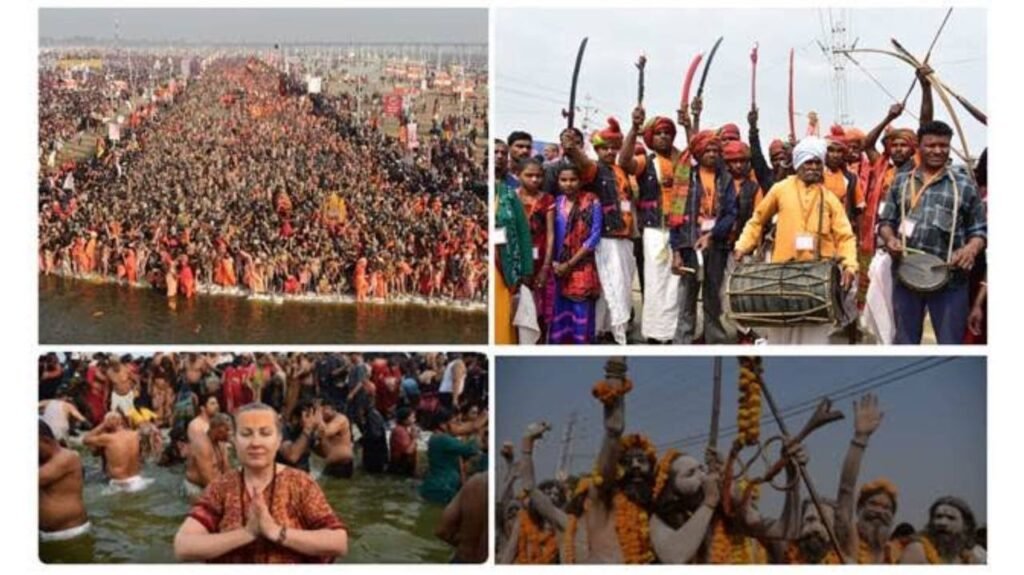
6. Indulge in Local Cuisine
- Significance: The mahakumbh 2025 offers a culinary journey through India.
- Experience: Sample a variety of street food, from spicy chaat and tangy kachoris to sweet jalebis and refreshing lassi. Don’t miss the opportunity to try local delicacies like ”Bedai Puri’.
Must-Try Local Delicacies:
- Bedai Puri: A popular breakfast dish consisting of deep-fried puri served with a spicy potato curry.
- Jalebi: A sweet delicacy made from deep-fried batter soaked in sugar syrup.
- Kachori: A savory snack filled with lentils and spices.
- Chaat: A variety of street food dishes, including papdi chaat, dahi puri, and bhel puri.
- Lassi: A refreshing yogurt-based drink, often flavored with mango or rose.
- Thandai: A chilled beverage made with milk, spices, and nuts, perfect for cooling down in the summer heat.
A Note on Safety:
- Food Safety: Always prioritize food safety. Avoid eating from unhygienic stalls or consuming raw or undercooked food.
- Water Safety: Drink bottled water or purified water to avoid any health issues.
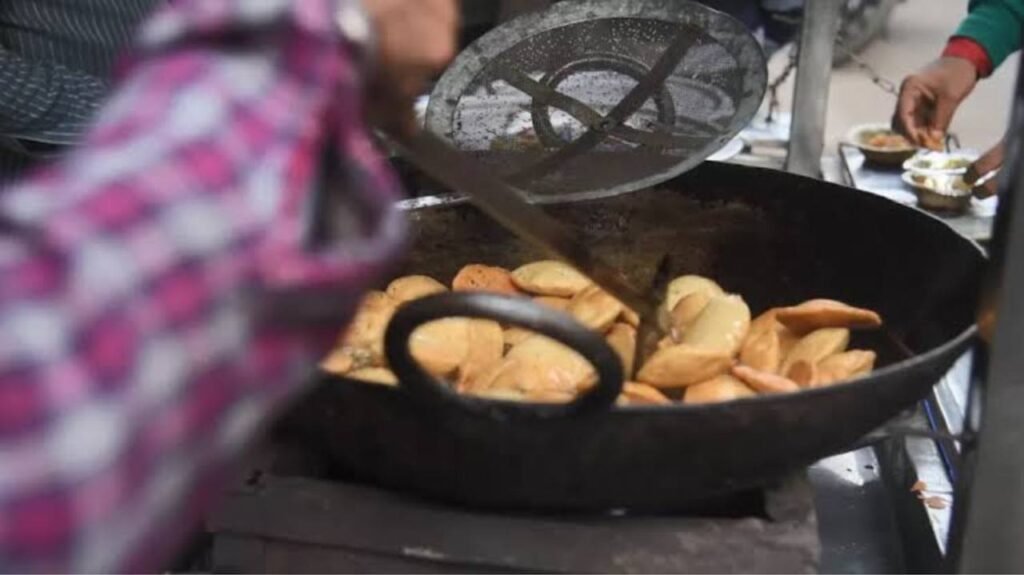
5. Visit the Allahabad Fort
- Significance: This historic fort, built by Emperor Akbar, offers a glimpse into the region’s rich history.
- Experience: Explore the fort’s impressive architecture, visit the Patalpuri Temple located within its walls, and enjoy panoramic views of the confluence.
The Allahabad Fort, a majestic structure with a rich history, offers a unique perspective on the Mahakumbh 2025 Mela. Here’s why you should consider visiting it during the 2025 event:
1. Historical Significance:
- Mughal Era Grandeur: Built by Emperor Akbar in the 16th century, the fort stands as a testament to Mughal architectural prowess.
- Witness History: Explore the fort’s impressive ramparts, gateways, and courtyards, imagining the historical events that unfolded within its walls.
- Patalpuri Temple: Located within the fort, this ancient temple dedicated to Lord Shiva adds to its spiritual significance.
2. Mahakumbh Perspective:
- Elevated View: The fort offers a unique vantage point to observe the vast expanse of the mahakumbh 2025. Witness the sea of humanity, the colorful tents, and the vibrant atmosphere from a different perspective.
- Escape the Crowds: While the Mela grounds can get incredibly crowded, the fort provides a temporary escape from the throngs of pilgrims.
- Historical Context: Understanding the historical significance of the fort adds another layer of depth to your Kumbh Mela experience.
3. Cultural Significance:
- Blend of History and Spirituality: The fort’s presence within the sacred city of Prayagraj creates a unique blend of historical and spiritual significance.
- Photographic Opportunities: Capture stunning photographs of the fort against the backdrop of the mahakumbh 2025, creating lasting memories.
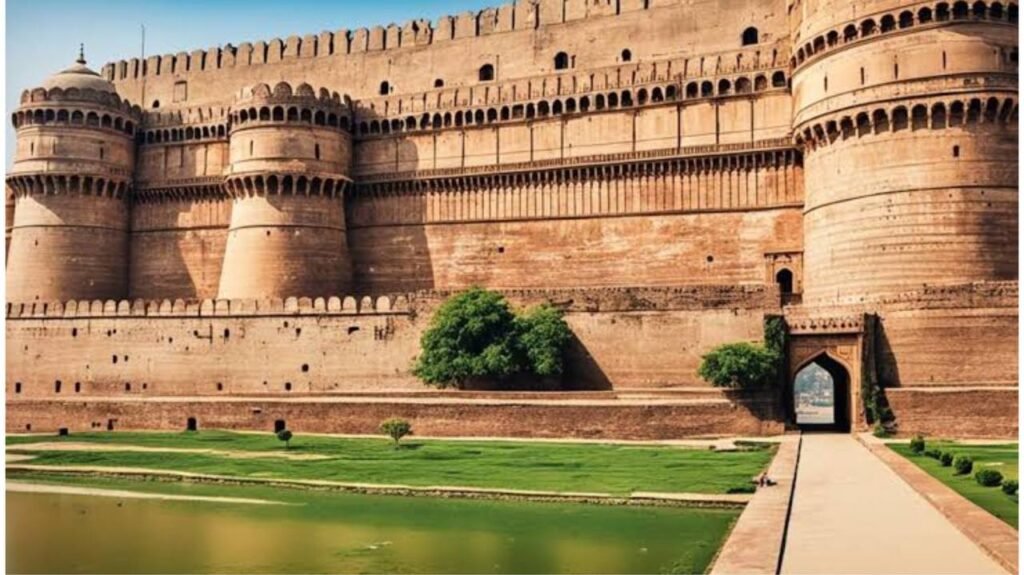
4. Witness the Aarti at Triveni Sangam
- Significance: The evening Aarti at the Triveni Sangam is a mesmerizing spectacle. Thousands of devotees gather on the banks of the river, chanting hymns and offering prayers as the priests perform the Aarti ceremony.
- Experience: Find a vantage point and witness the breathtaking sight of thousands of lamps illuminating the confluence, creating a magical atmosphere.
Here’s what you can expect:
- A Gathering of Faith: As the sun begins to set, thousands of devotees gather on the ghats, creating a sea of humanity. The atmosphere is charged with anticipation and a sense of collective devotion.
- The Ritual Begins: Priests, adorned in colorful robes, begin the Aarti ceremony. They chant sacred hymns, blow conch shells, and ring bells, creating a symphony of sounds that fills the air.
- A Dance of Light: The highlight of the ceremony is the lighting of hundreds of earthen lamps (diyas). These lamps, arranged in intricate patterns, are offered to the river goddess, creating a breathtaking spectacle of light and color.
- A Divine Experience: The combination of the chanting, the music, the flickering lights, and the serene flow of the river creates a truly magical and unforgettable experience.

3. Immerse Yourself in the Mela’s Vibrant Atmosphere
- Significance: The mahakumbh 2025 is a kaleidoscope of colors, sounds, and sights. Beyond the religious significance, it’s a cultural extravaganza showcasing India’s diversity.
- Experience: Wander through the vast Mela grounds, explore the numerous stalls selling religious artifacts, souvenirs, and local delicacies. Immerse yourself in the vibrant atmosphere, listen to the chants and prayers, and soak in the energy of the crowd.
The mahakumbh 2025 is a sensory feast. It’s a kaleidoscope of colors, a symphony of sounds, and a vibrant tapestry woven from the threads of faith, culture, and human connection. To truly experience the Mela, you must immerse yourself in its vibrant atmosphere.
A Symphony of Colors:
- The Akharas: Each Akhara (monastic order) has its own distinct colors and attire. From the saffron robes of the Naga Sadhus to the vibrant hues of other orders, the Mela is a riot of colors.
- The Devotees: Millions of pilgrims, dressed in their finest attire, create a sea of colors. Women in colorful saris, men in traditional dhotis, and children adorned with vibrant decorations add to the visual spectacle.
- The Stalls: The Mela is a bustling marketplace, overflowing with stalls selling colorful handicrafts, religious artifacts, and vibrant textiles.
A Tapestry of Sounds:
- Chants and Prayers: The air is filled with the constant chanting of mantras, hymns, and prayers. The rhythmic chanting creates a mesmerizing soundscape.
- Music and Music: Folk music, devotional songs, and the rhythmic beating of drums fill the air, creating a vibrant and energetic atmosphere.
- The Hum of the Crowd: The collective murmur of the millions of pilgrims creates a unique and powerful sound, a testament to the sheer scale and energy of the Mela.
A Feast for the Senses:
- The Aroma of Incense: The air is fragrant with the aroma of incense, flowers, and the delicious smells emanating from the numerous food stalls.
- The Taste of Tradition: Indulge in the diverse culinary delights offered at the Mela, from spicy chaat and tangy kachoris to sweet jalebis and refreshing lassi.
- The Touch of Tradition: Feel the texture of the sacred river as you dip your feet in its waters. Touch the intricately carved sculptures and feel the smooth surface of the colorful textiles.
Experiencing the Human Connection:
- Engage with the Devotees: Interact with fellow pilgrims, share stories, and exchange blessings.
- Witness Acts of Kindness: Observe acts of selfless service and compassion as people from all walks of life come together in a spirit of unity.
- Feel the Collective Energy: Immerse yourself in the collective energy of the millions of devotees, and experience the profound sense of unity and spirituality that pervades the Mela.
Tips for Immersing Yourself:
- Early Morning Walks: Take an early morning walk through the Mela grounds to witness the sunrise and observe the daily rituals of the sadhus.
- Attend Cultural Performances: Enjoy the vibrant cultural performances, including music, dance, and theater, which showcase India’s rich heritage.
- Explore the Akhara Camps: Visit the Akhara camps, interact with the sadhus, and learn about their unique traditions and philosophies.
- Spend Time in Contemplation: Find a quiet spot to sit and observe the human tapestry, reflecting on the deeper meaning of the Kumbh Mela.
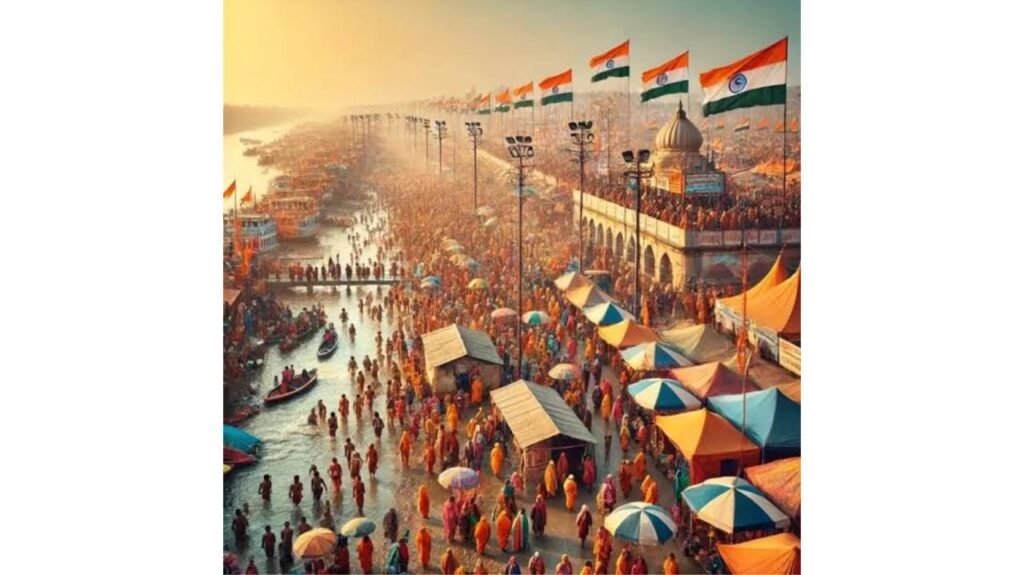
2. Explore the Akharas
- Significance: The Akharas, or monastic orders, play a vital role in the Kumbh Mela. Each Akhara has its own unique traditions, rituals, and colorful processions.
- Experience: Visit the Akhara camps, witness their daily routines, and interact with the sadhus and saints. Observe their ascetic practices and learn about their philosophies. Many Akharas offer cultural performances and demonstrations.
The Kumbh Mela is not just a religious gathering; it’s a vibrant tapestry woven with the diverse traditions of Hindu monastic orders known as Akharas. These ancient orders, with their unique philosophies, rituals, and lifestyles, add a captivating layer to the Kumbh experience.
What are Akharas?
- Monastic Orders: Akharas are essentially monastic orders within Hinduism. They are groups of sadhus (holy men) who follow specific spiritual disciplines, engage in rigorous austerities, and dedicate their lives to religious pursuits.
- Diverse Traditions: Each Akhara has its own distinct set of beliefs, rituals, and practices. Some Akharas are known for their strict adherence to ancient traditions, while others embrace a more modern approach.
- Social and Cultural Influence: Akharas have played a significant role in shaping Hindu society and culture. They have been involved in various social and religious reforms throughout history.
Experiencing the Akharas at Kumbh Mela:
- Visiting Akhara Camps: One of the most enriching experiences at the Kumbh Mela is visiting the Akhara camps. These camps are bustling hubs of activity, where sadhus engage in meditation, chanting, and other spiritual practices.
- Witnessing Daily Routines: Observe the daily routines of the sadhus, which may include morning prayers, meditation, yoga, and communal meals.
- Attending Akhara Processions: Witness the grand processions of the Akharas, which are a spectacular sight. These processions involve colorful displays, chanting, and music.
- Interacting with Sadhus: If possible, respectfully interact with the sadhus and learn about their spiritual journeys and philosophies.
Key Akharas at mahakumbh 2025:
- Niranjani Akhara: One of the oldest and most prominent Akharas, known for its strict discipline and ascetic practices.
- Juna Akhara: Another major Akhara, known for its martial arts traditions and its role in protecting Hindu shrines.
- Mahanirvani Akhara: A prominent Akhara that has played a significant role in social and religious reforms.
- Kinnar Akhara: A unique Akhara that represents the transgender community, promoting inclusivity and breaking down social barriers.
Beyond the Kumbh Mela:
- Akharas and Social Causes: Many Akharas are actively involved in social causes, such as education, healthcare, and environmental protection.
- Akharas and Indian Culture: Akharas have significantly contributed to the rich cultural heritage of India, preserving ancient traditions and promoting spiritual values.
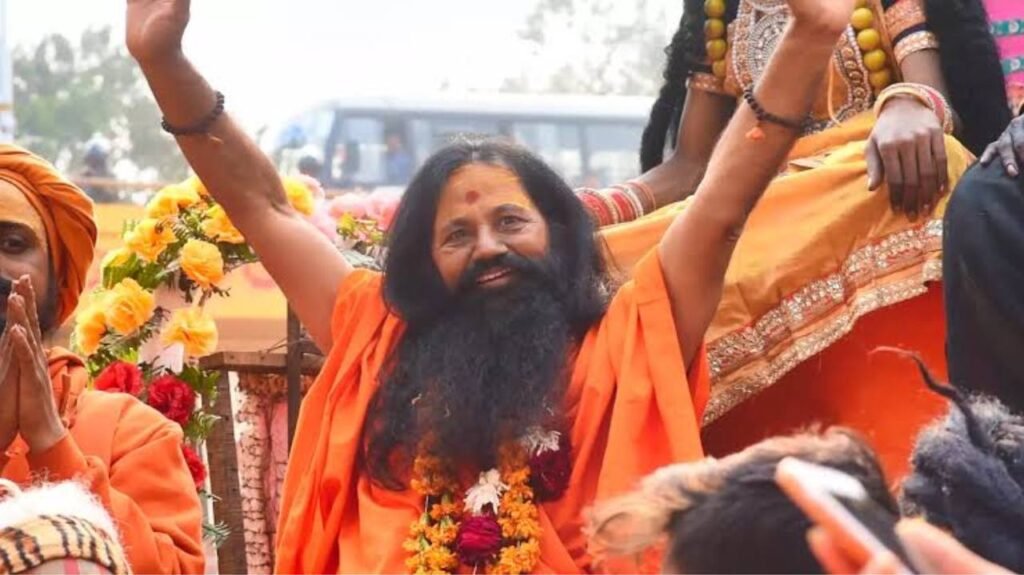
1. The Holy Dip (Shahi Snan)
- Significance: Witnessing the Shahi Snan, the most auspicious bathing days, is an unforgettable experience. Millions of devotees take a dip in the Triveni Sangam, seeking purification and spiritual liberation.
- Key Dates: Mark your calendar for the four main Shahi Snan dates: Makar Sankranti, Paush Purnima, Mauni Amavasya, and Basant Panchami.
- Experience: Arrive early to secure a good spot and witness the sheer scale and fervor of the event. The atmosphere is electric, with chanting, prayers, and a sense of collective devotion.
The Shahi Snan, or Royal Bath, is the most significant event of the Kumbh Mela. It refers to the ceremonial bathing of holy men and devotees in the sacred waters of the Triveni Sangam, the confluence of the Ganga, Yamuna, and mythical Saraswati rivers.
Also Read…….Top 10 Famous Fast Food In Prayagraj…click here
Significance:
- Purification and Salvation: Hindus believe that taking a dip in the holy waters of the Triveni Sangam during the Shahi Snan absolves them of their sins and helps them attain salvation (Moksha).
- Spiritual Significance: The Shahi Snan is considered an extremely auspicious time for spiritual purification and enlightenment. It is believed that the waters of the Sangam are imbued with divine energy during these dates.
- Cultural Significance: The Shahi Snan is a major cultural event that showcases the rich traditions and diversity of India. It is a time for introspection, spiritual rejuvenation, and communal celebration.
Key Dates:
There are four main Shahi Snan dates during the mahakumbh 2025:
- Makar Sankranti: This marks the transition of the Sun into the Capricorn zodiac.
- Paush Purnima: This full moon day in the Hindu month of Paush is considered highly auspicious.
- Mauni Amavasya: This new moon day is considered particularly significant for spiritual purification.
- Basant Panchami: This festival marks the arrival of spring and is celebrated with great enthusiasm.
| Bathing Date | Festival | Type of Bathing |
| 13 January 2025 | Paush Poornima | Normal Snan |
| 14 January 2025 | Makar Sankranti | Shahi Snan |
| 29 January 2025 | Mauni Amavasya | Shahi Snan |
| 3 February 2025 | Basant Panchami | Shahi Snan |
| 4 February 2025 | Achla Saptami | Normal Snan |
| 12 February 2025 | Maghi Poornima | Normal Snan |
| 26 February 2025 | Maha Shivratri | Normal Snan |
The Experience:
- A Sea of Humanity: Witnessing the Shahi Snan is an awe-inspiring experience. Millions of devotees gather at the Triveni Sangam, creating a sea of humanity.
- Procession of Saints: The procession of holy men from various Akharas (religious orders) to the bathing ghats is a majestic sight. Dressed in colorful robes and adorned with ash, the saints lead the way, creating a vibrant and spiritual atmosphere.
- The Dip: Devotees, both men and women, take a dip in the sacred waters, chanting prayers and seeking blessings. The atmosphere is charged with devotion and a sense of collective spiritual energy.
- A Visual Spectacle: The Shahi Snan is a visual spectacle, with a sea of humanity, vibrant colors, and a palpable sense of spiritual energy.
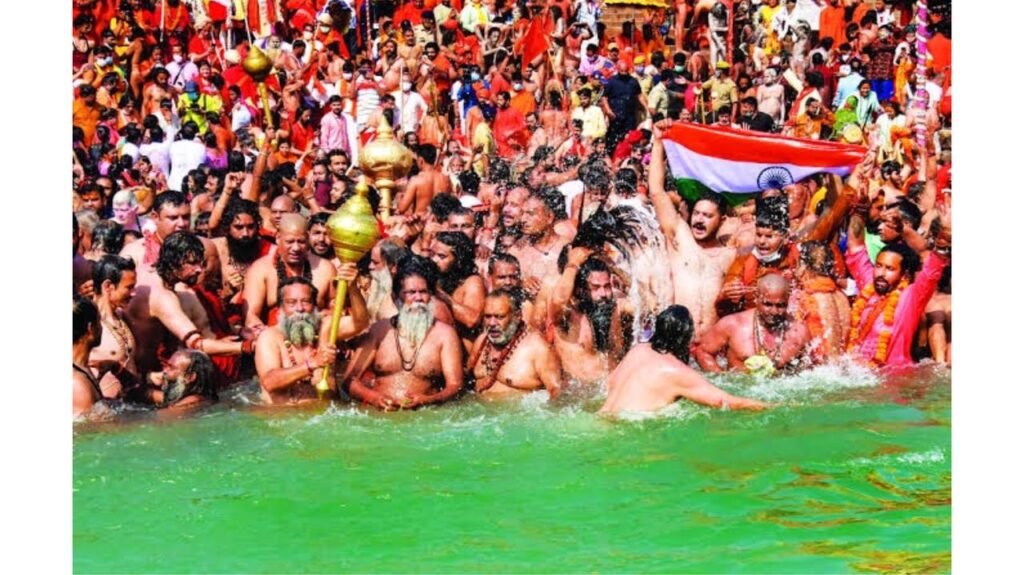
Beyond the Top 10:
- Visit Anand Bhavan: The ancestral home of Jawaharlal Nehru, India’s first Prime Minister, offers a glimpse into the life and times of this iconic leader.
- Explore Khusro Bagh: A beautiful Mughal-era garden with stunning tombs, offering a peaceful retreat from the bustling Mela.
- Attend a Ganga Aarti at Triveni Sangam: Experience the divine energy and spiritual fervor of the evening Aarti ceremony at the confluence.
- Enjoy the local street food: Indulge in the delicious and diverse street food scene, from spicy chaat to sweet jalebis.
- Capture the memories: Capture the essence of the Kumbh Mela through photographs and videos.
- Respect local customs and traditions: Dress modestly, maintain cleanliness, and be mindful of the religious sentiments of fellow pilgrims.
Planning Your Trip:
- Book in Advance: Accommodation options can be limited during the peak season. Book your accommodation and transportation well in advance.
- Pack Light: Pack light and comfortable clothing, suitable footwear, and essentials like sunscreen, a hat, and a water bottle.
- Stay Hydrated: The weather can be hot and humid. Stay hydrated by drinking plenty of water and fluids.
- Respect the Environment: Maintain cleanliness and avoid littering.
- Be Patient and Tolerant: The mahakumbh 2025 can be crowded and chaotic. Be patient and tolerant of others.
The Prayagraj Mahakumbh 2025 Mela is a truly unique and unforgettable experience. By embracing the spirit of the Mela, exploring its diverse offerings, and respecting its sanctity, you can make the most of this once-in-a-lifetime opportunity.
Disclaimer: This blog post is for informational purposes only and may not reflect the most up-to-date information. Please refer to official sources for the latest details and schedules for the Prayagraj Mahakumbh 2025 Mela.
FAQs
Q: What is the Mahakumbh, and why is it held in Prayagraj?
A: The Mahakumbh is a massive Hindu pilgrimage that takes place every 12 years at one of four sacred locations in India: Prayagraj (Allahabad), Haridwar, Nashik, and Ujjain. It’s one of the largest peaceful gatherings on Earth, with millions of devotees congregating to take a holy dip at the confluence of the Ganges, Yamuna, and mythical Saraswati rivers (Triveni Sangam). Prayagraj is considered especially significant as it’s the location of this confluence.
Q: How are the “best” things to do at the Mahakumbh 2025 determined?
A: The “best” things to do depend on individual interests and spiritual inclination, but some key activities are important for almost all pilgrims: Taking a holy dip (including Shahi Snan): Bathing at the Sangam is the most important ritual of the Mahakumbh.
Attending Aarti and prayers: Participating in the Ganga Aarti and other religious ceremonies.
Listening to discourses by saints and sages: Gaining spiritual knowledge.
Exploring the Mela grounds: Visiting various cultural exhibitions, Bhandaras (community kitchens), and other attractions.
Visiting other religious sites in Prayagraj: Besides the Sangam, Prayagraj has many ancient temples and places of interest.
Q: What are the security and accommodation arrangements during the Mahakumbh?
A: The government and Mela administration make extensive arrangements for security and accommodation. Police and other security forces are deployed for security. Tent cities, Dharamshalas (pilgrim shelters), and other temporary accommodation options are available. However, the crowd during the Mahakumbh is very large, so it’s advisable to plan and book in advance.
Q: When is the best time to visit the Mahakumbh?
A: The Mahakumbh 2025 will be held from January 13th to February 26th. The Shahi Snan (Royal Bathing) days are the most important and busiest days. If you want to bathe with fewer crowds, visiting on other days might be better. Weather-wise, January-February is also a relatively cooler time in Prayagraj.
Q: What are some tips for making my Mahakumbh visit memorable?
A: Plan in advance: Book accommodation, transportation, and other arrangements beforehand.
Follow safety rules: Be cautious in crowds and follow the instructions of authorities.
Respect local culture: Dress appropriately and respect local customs.
Go with an open mind: The Mahakumbh is a spiritual and cultural experience, so enjoy it with an open mind.
Take care of your health: Drink plenty of water and eat properly.

